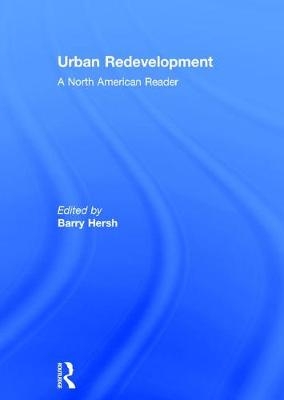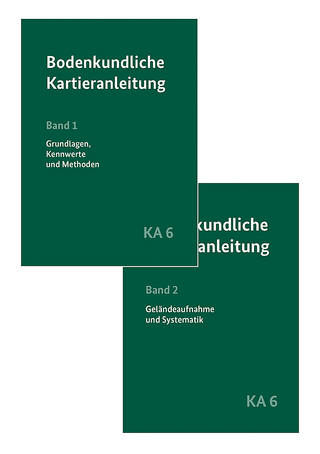
Urban Redevelopment
Routledge (Verlag)
978-1-138-78640-0 (ISBN)
Urban Redevelopment: A North American Reader seeks to shed light on the practice by looking at both its failures and successes, ideas that seemed to work in specific circumstances but not in others.
The book aims to provide guidance to academics, practitioners and professionals on how, when, where and why, specific approaches worked and when they didn’t. While one has to deal with each case specifically, it is the interactions that are key. The contributors offer insight into how urban design affects behavior, how finance drives architectural choices, how social equity interacts with economic development, how demographical diversity drives cities’ growth, how politics determine land use decisions, how management deals with market choices, and how there are multiple influences and impacts of every decision.
The book moves from the history of urban redevelopment, The City Beautiful movement, grand concourses and plazas, through urban renewal, superblocks and downtown pedestrian malls to today’s place-making: transit-oriented design, street quieting, new urbanism, publicly accessible, softer, waterfront design, funky small urban spaces and public-private megaprojects. This history also moves from grand masters such as Baron Haussmann and Robert Moses through community participation, to stakeholder involvement to creative local leadership. The increased importance of sustainability, high-energy performance, resilience and both pre- and post-catastrophe planning are also discussed in detail.
Cities are acts of man, not nature; every street and building represents decisions made by people. Many of today’s best recognized urban theorists look for great forces; economic trends, technological shifts, political movements and try to analyze how they impact cities. One does not have to be a subscriber to the "great man" theory of history to see that in urban redevelopment, successful project champions use or sometimes overcome overall trends, using the tools and resources available to rebuild their community. This book is about how these projects are brought together, each somewhat differently, by the people who make them happen.
Barry Hersh is a Clinical Associate Professor of Real Estate, teaching graduate courses in property development and coordinating the development program for the New York University Schack Institute of Real Estate, in the School of Continuing and Professional Studies.
Table of ContentsForward: Charlie BartschIntroduction: What is Urban Redevelopment Today?1. History and Trends From Government Bulldozer to Civic Engagement: A Brief History Case Study: Baltimore, Maryland Case Study: Eastwick, Philadelphia, Pennsylvania Measuring Urban Redevelopment Trends 2015Case Study: Urbanophile: 2.Historic Preservation: Building upon the PastCase Studies: Toronto, Ontario, CanadaCase Study: Bethlehem, Pennsylvania3. Urban Design: Process and the Public Realm Iconic, Contextual, Brutal and FunkyCase Study: Defensible SpaceCase Study, Rocket Street, Little Rock, Arkansas Case Study: Vancouver, BC (Falls Creek, Convention Center and height controls)4. Transportation and Other Infrastructure Transportation Overview and Place-making, GB ArringtonCase Study Pearl District, Portland, OregonCase Study, Denver, ColoradoOther Infrastructure and Sustainability5. Parks, Open Space, Arts and CultureMini Case Studies: Gas Works Park, Seattle, WashingtonGreenway, Ranson, West Virginia Dry Gulf Stream Restoration at Lamar Station Crossing, Lakewood ColoradoMyriad Botanical Garden, Oklahoma City, OklahomaDurham Performing Arts Center, Durham, North Carolina6. Environmental Issues - BrownfieldsCase Study: Harbor Point, Stamford, CTCase Study: Toledo, OhioCase Study: Gas StationsCase Study: Government Facilities7. Revitalizing Neighborhoods, Housing and Social Equity: Building upon community Case Study Camden, NJ8. Real Estate: The Financial Market’s Perspective by Rick MendelFunding the GapDevelopers’ PerspectiveReal Estate MarketingEconomic Development9. Megaprojects and City-Wide: Big RedevelopmentCase Study: Atlantic Station, Atlanta, GeorgiaCase Study: The West Side of Manhattan, the High Line and Hudson Yards Case Study: Detroit10: The Urban Redevelopment Process; Bringing It All Together for Great Urban Redevelopment BibliographyIndex
| Zusatzinfo | 4 Tables, black and white; 12 Line drawings, black and white; 31 Halftones, black and white |
|---|---|
| Verlagsort | London |
| Sprache | englisch |
| Maße | 174 x 246 mm |
| Gewicht | 520 g |
| Themenwelt | Naturwissenschaften ► Geowissenschaften ► Geografie / Kartografie |
| Sozialwissenschaften ► Soziologie | |
| Technik ► Architektur | |
| Technik ► Umwelttechnik / Biotechnologie | |
| Wirtschaft ► Betriebswirtschaft / Management ► Rechnungswesen / Bilanzen | |
| ISBN-10 | 1-138-78640-3 / 1138786403 |
| ISBN-13 | 978-1-138-78640-0 / 9781138786400 |
| Zustand | Neuware |
| Haben Sie eine Frage zum Produkt? |
aus dem Bereich


